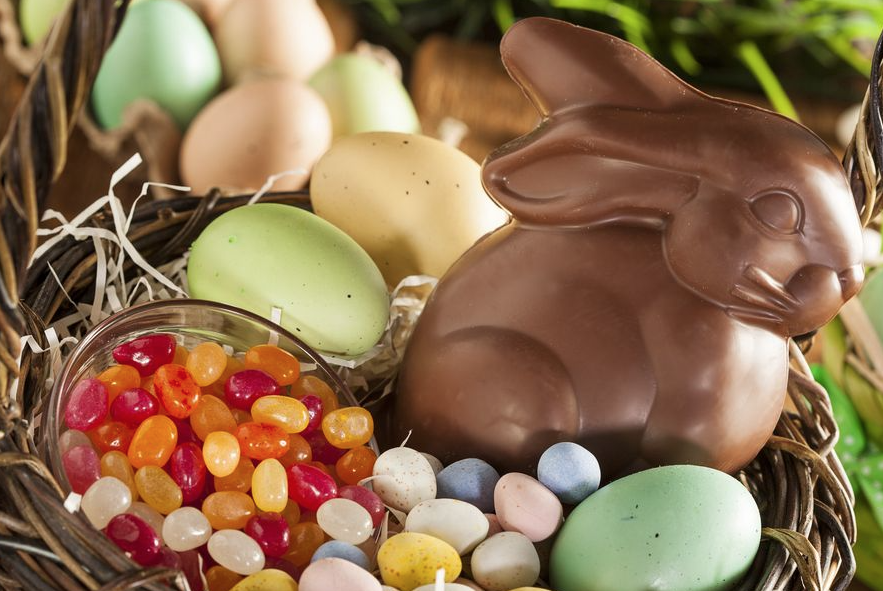By: Heidi Wagenbach
Even in my twenties, I still enjoy receiving a chocolate bunny for Easter. Who wouldn’t? A delicate, melt-in-your-mouth sweet (if you get a proper one from a reputable candy store and not from a gas station). They’re always covered in gold foil and placed directly at the center of other sugary delights to celebrate the spring holiday. Not being very religious, we faded out of attending church on April Sunday, yet appreciate being around close family, laughing and eating brunch. But how did a bunny become associated as being the figure for Easter, nearly as popular as Santa is for Christmas? Keep reading to find out!
A Long Time Ago…
The legend first originated in Germany with Oscheter Haws (Easter Hare), who laid colored eggs after a long winter’s sleep. She hid them in the garden as gifts for children to find. Hares were never domesticated like other rabbits and in medieval Europe, the rabbit was a popular symbol for spring because of their fertility. Professor Dr. Diane Shane who studies various religions stated that: “Rabbits (originally hares) are… fertility symbols associated with the arrival of spring, because they are so prolific and give birth as soon as the weather warms.” The term “Easter” derived from Ostara, a pagan goddess once worshipped by the Germanic people. And guess what? Her sacred animal was indeed a rabbit.
… In A Century Far Far Away
In the 1700s, German immigrants (or the Pennsylvania Dutch) brought Oschter Haws to the eastern part of the US. (Tins for chocolate molds have been found in Munich that date back to the late 1800s). There are no records to who specifically invented the chocolate Easter bunny, however drugstore owner Robert L. Strohecker played a large part in their popularity. He commissioned a 5-foot chocolate rabbit to advertise Easter. (Yes, 5-FOOT… that’s nearly as tall as me!) This giant bunny was created by candy manufacturer William H. Luden, who became recognized years later by inventing the menthol cough drop. Since then, chocolate Easter bunnies have remained an icon.
★Fun Facts★
- An estimated 90 million chocolate bunnies are produced each year.
- Chocolate bunnies are hollow because one piece is ½” thick, which makes it nearly impossible to bite through. It also allows chocolatiers to make them larger for visual appeal and enjoyment. This practice began during WWII cocoa rationing. Side note: The New York Times explored the lore and legends of the chocolate Easter bunny. They joked that biting into a hollow one is “a child’s first taste of deception” (ha!).
- The largest chocolate bunny was made in 2014 for the Chocofest in Brazil. It was over 8,000 pounds and towered 13-feet tall. The most expensive bunny, on the other hand, sells for almost $50,000 with eyes made out of 1.7 carat diamonds.
- The Bortz Chocolate Company in Reading, PA is credited with being the first company to introduce personalities to their bunnies in 1934, making the treats play sports, get married, and be overall more cartoony (even though the traditional is here to stay).
- The most popular bunny during the Easter season remains to be milk chocolate.
- 87% of parents will buy or make Easter baskets for their children, with 81% of them snagging some of the sweets themselves.
- 89% of Americans think chocolate bunnies should be eaten ears first.
- The Easter holiday itself generates an estimated $18 billion in the US.
- The Society for the Protection of Cruelty to Animals (SPCA) launched a campaign to encourage people to eat chocolate bunnies as opposed to buying a real one. In 2018, hundreds of abandoned bunnies were received by SPCA after the reality set in for families of having a pet for over a decade (bunnies live up to 12 years), rather than just Easter Sunday.
- In Northern Canada, a “fluffle” is used to describe a group of bunnies.
Overall…
Writing these blogs is really opening my eyes to how unique some of the history is for foods we associate as “normal” in our everyday lives, without thinking too much about their origin. Too often we get wrapped up in the stress that holidays have, with scheduling get togethers and buying presents, that we don’t appreciate how we got here in the first place. So, this spring, no matter if you celebrate Easter or not, be sure to share some of these new facts with your friends and family… regardless, they’ll find it interesting!
Sources:
Everything You Ever Wanted To Know About Chocolate Bunnies
The Untold Truth Of Chocolate Easter Bunnies

